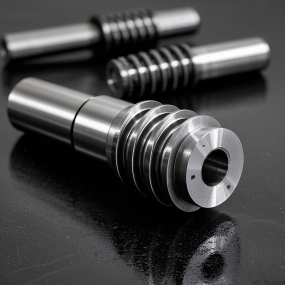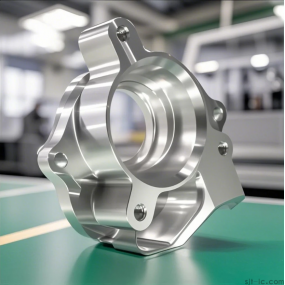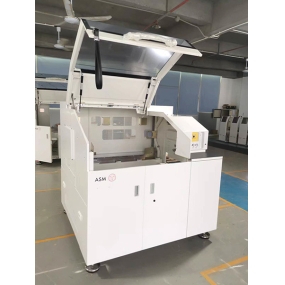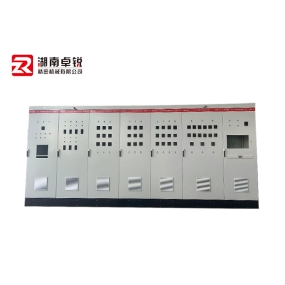1. Spindle rotation error.
Spindle rotation error refers to the amount of change in the actual rotation axis of the spindle relative to its average rotation axis at each time. The main causes of radial rolling errors in the spindle include coaxiality errors in several sections of the spindle neck, various errors in the bearings themselves, coaxiality errors between bearings, and spindle deflection.
2. Rail malfunction.
The guide rail is the benchmark for confirming the relative orientation relationship of various machine tool components on the machine tool, and it is also the benchmark for the movement of the machine tool. The uneven wear of the guide rail and the quality of the device are also important factors causing guide rail errors.
3. Fault in the transmission chain.
The transmission error of the transmission chain refers to the relative motion error between the transmission components at the beginning and end of the transmission chain. Transmission errors are caused by manufacturing and assembly errors of various components in the transmission chain, as well as wear and tear during use.
4. A few errors in the tool.
In the cutting process of any tool, wear is inevitable, causing changes in the size and shape of the workpiece.
5. Positioning error.
One is the fault of inconsistent benchmarks. The reference used to confirm the dimensions and orientation of a certain surface on a part drawing is called a planning reference. The reference point used on the process diagram to confirm the size and orientation of the machining surface of the process is called the process reference point. When machining workpieces on machine tools, it is necessary to select several elements on the workpiece as the positioning reference during machining. If the selected positioning benchmark does not coincide with the planning benchmark, it will result in a benchmark misalignment error. The second issue is inaccurate positioning of the secondary production.
6. Errors caused by the force and deformation of the process system.
One is the stiffness of the workpiece. In the process system, if the rigidity of the workpiece is relatively low compared to the machine tool, cutting tool, and fixture, then under the action of cutting force, the deformation of the workpiece due to the lack of rigidity will have a significant impact on the machining accuracy The second is the rigidity of the cutting tool. The stiffness of the external turning tool in the normal direction of the machining surface is very high, and its deformation can be ignored. Boring a small diameter inner hole, the rigidity of the tool holder is poor, and the force and deformation of the tool holder have a significant impact on the machining accuracy of the hole. The third is the stiffness of machine tool components. Machine tool components are composed of many parts. So far, there is no suitable simple calculation method for the stiffness of machine tool components. At present, experimental methods are mainly used to confirm the stiffness of machine tool components.
7. Errors caused by thermal deformation of the process system.
The thermal deformation of the process system has a significant impact on machining accuracy, especially in precision machining and large part machining, where machining errors caused by thermal deformation can sometimes account for 50% of the total workpiece errors.
8. Adjust the fault.
In every process of mechanical processing, it is necessary to adjust the process system in one way or another. Because adjustments cannot be guaranteed to be precise, there may be adjustment errors. In the process system, the mutual orientation accuracy of the workpiece and the tool on the machine tool is ensured by adjusting the machine tool, cutting tool, fixture or workpiece. When the original accuracy of machine tools, cutting tools, fixtures, and workpiece blanks all meet the process requirements without considering dynamic factors, the impact of adjustment errors will play a decisive role in machining accuracy.
9. Measurement errors.
When measuring parts during or after the machining process, the measurement accuracy is directly affected by the measurement method, measuring tool accuracy, workpiece, and subjective and objective factors.


 Spanish
Spanish Arabic
Arabic French
French Portuguese
Portuguese Belarusian
Belarusian Japanese
Japanese Russian
Russian Malay
Malay Icelandic
Icelandic Bulgarian
Bulgarian Azerbaijani
Azerbaijani Estonian
Estonian Irish
Irish Polish
Polish Persian
Persian Boolean
Boolean Danish
Danish German
German Filipino
Filipino Finnish
Finnish Korean
Korean Dutch
Dutch Galician
Galician Catalan
Catalan Czech
Czech Croatian
Croatian Latin
Latin Latvian
Latvian Romanian
Romanian Maltese
Maltese Macedonian
Macedonian Norwegian
Norwegian Swedish
Swedish Serbian
Serbian Slovak
Slovak Slovenian
Slovenian Swahili
Swahili Thai
Thai Turkish
Turkish Welsh
Welsh Urdu
Urdu Ukrainian
Ukrainian Greek
Greek Hungarian
Hungarian Italian
Italian Yiddish
Yiddish Indonesian
Indonesian Vietnamese
Vietnamese Haitian Creole
Haitian Creole Spanish Basque
Spanish Basque











